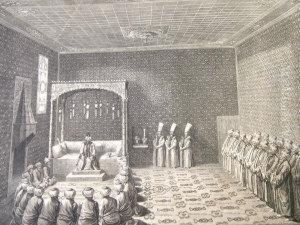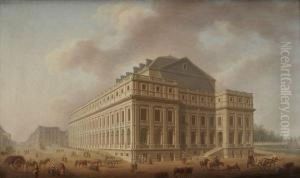Pierre Charles Baquoy Paintings
Pierre Charles Baquoy was a French engraver born in 1759 in Paris, France. He was the son of another engraver, Charles Baquoy. Not much is known about his early life and education, but it is likely that he received his initial training from his father, who would have provided him with the basic skills and techniques required for the art of engraving.
Baquoy's career spanned a significant period in French history that included the latter part of the reign of Louis XVI, the French Revolution, and the Napoleonic era. During this time, he developed his craft and became known for his engravings, which were primarily based on the works of other artists. He was particularly adept at translating paintings into engravings, which allowed for the wider circulation of the images contained in those paintings.
Throughout his career, Baquoy created a variety of works, including portraits, genre scenes, and historical subjects. He worked on illustrations for books and produced prints that were sold to the public. His engravings were appreciated for their clarity of line and attention to detail, which made them particularly suitable for the reproduction of popular images of the time.
The political upheavals of the era in which Baquoy lived undoubtedly affected the art market, but engravers often found steady work due to the need for illustrations in publications and the demand for portraits and commemorative images. Baquoy's body of work reflects the tastes and interests of the time, including neoclassical subjects that were popular during the late 18th and early 19th centuries.
Pierre Charles Baquoy died in 1829. Although he may not be as widely recognized as some of his contemporaries, his contributions to the field of engraving are noteworthy, and his works continue to be of interest to collectors and historians of French art. Baquoy's engravings, like those of many artists of his time, helped to disseminate the artistic and cultural values of his era and provide a visual record of the period's aesthetic sensibilities.

